Location of Tamang Heritage Trail Trek
The Tamang Heritage Trail Trek is located in the Langtang region of Nepal, near the Tibetan border. It lies within Langtang National Park, north of Kathmandu. The trek starts and ends in Syabrubesi, which is easily accessible by road, with plenty of public transportation options available. While the Langtang Valley Trek also begins from Syabrubesi, the Tamang Heritage Trail heads north, passing through beautiful Tamang villages that are culturally rich and offer a glimpse into traditional rural life.
Best Time to Trek the Tamang Heritage Trail
The best time to trek the Tamang Heritage Trail is during spring (March–May) and autumn (September–November). These seasons offer stable weather and crystal-clear skies, providing stunning mountain views, making them ideal for photography and cultural experiences in Tamang villages.
During these seasons, you can also experience major Nepalese festivals like Dashain and Tihar, which are widely celebrated in the villages. Spring brings blooming rhododendrons and wildflowers, adding vibrant colors to the landscape, while mild temperatures ensure comfortable trekking conditions—not too hot or too cold.
Although the trek can be done year-round due to its lower altitude, trekking in winter and monsoon presents some challenges, such as cold temperatures, snowfall, and slippery trails in winter and heavy rainfall, leeches, and muddy paths during the monsoon.
Tamang Heritage Site Trek Difficulty
The Tamang Heritage Trail Trek is considered an easy to moderate trek, making it suitable for all trekkers, including beginners, families, and those with an average fitness level. It does not involve extreme altitudes, but some sections require good endurance and physical fitness, as the trek lasts for five to six days, with daily walks of five to seven hours on uphill and downhill trails in a hilly region. The trails are well-marked but include some steep ascents and descents. The trek passes through forests, ridges, and Tamang villages, with some rocky and uneven sections requiring careful footing. No prior trekking experience is needed, but a basic fitness level is required to walk five to seven hours per day.
Requires Permits for Tamang Heritage site Trek
The Tamang Heritage Site Trek lies within Langtang National Park, requiring trekkers to obtain a National Park Entrance Permit and a TIMS (Trekker’s Information Management System) card for safety tracking; however, no special permit is needed, unlike restricted areas such as Upper Mustang, Upper Dolpo, the Manaslu Region, and Nar-Phu Valley, though the government has mandated these two permits specifically for trekking in the Langtang region, which must be presented at checkpoints along the trekking route, and failure to obtain them in advance may result in additional charges (penalty) or legal consequences under Nepalese law, including being required to turn back, while these permits can be obtained through a registered trekking company or the Tourism Board (Bhrikuti Mandap), with the National Park Entrance Permit also available for purchase in Dhunche..
The required permits and their respective costs per person (per trek) are as follows:
- TIMS (Trekker’s Information Management System): US$ 20 for all trekkers
- Langtang National Park Entry Permit: US$ 30 for all foreign nationalities and US$ 15 for SAARC nationals.
Cost of Tamang Heritage Site Trek
The cost of the Tamang Heritage Trail Trek varies depending on the duration, group size, level of service, and type of package you choose (such as guided or self-guided). Our itinerary includes 9 nights in Nepal, with 3 nights in Kathmandu and 6 nights on the trek.
For this program, the cost per person ranges from $550 to $950, depending on the group size. This cost includes all logistics, as mentioned in the Tamang Heritage Trek cost inclusion and exclusion section.
Generally, the package covers all accommodations, including three nights in a hotel, all public transportation during the trek, a private vehicle for Kathmandu Valley sightseeing, all necessary trekking permits, three meals a day, and three servings of hot tea daily. However, additional costs such as personal expenses, bar bills, souvenirs, and tips are not included.
Hire a Guide for Tamang Heritage Trail Trek
Hiring an experienced trekking guide for the Tamang Heritage Trek is essential because the trail passes through Tamang villages, dense forests, and terraced farmland. Many sections of the trail branch off into farmland, houses, and forests, making navigation difficult.
If you attempt this trek without a guide, finding the right path can be mentally challenging, adding to the difficulty of the journey. A guide will ensure you stay on track, manage the trek safely, and help with navigation, accommodations, and overall logistics. Their expertise will make the experience smoother and more enjoyable, allowing you to focus on the beauty of the trek rather than worrying about the route.
Besides route navigation, the Tamang Heritage Trek offers a diverse experience of nature and culture. A guide will not only help you stay on track but also provide insights into local traditions, natural surroundings, and facilitate interactions with the local people, ensuring a more enriching and stress-free journey.
Additionally, the guide will handle accommodation, meals, transportation, and permits throughout the trip and will always be there to assist you in any situation.
We have a team of highly experienced and professional guides who ensure your trek is comfortable, safe, and enjoyable with full responsibility, care, honesty, and kindness. Hiring an experienced trekking guide is highly recommended for the Tamang Heritage Trek to make the most of your adventure.
Food and Accommodations during the Tamang Heritage Trek
The Langtang Region Trekking is one of the most popular trekking destinations in Nepal for beginners, and the Tamang Heritage Trek is also located in the same region.
Along this route, there are numerous teahouses and homestays providing accommodation and meals for trekkers. Due to its growing popularity, new teahouses and lodges are built every year in various locations to accommodate the increasing number of visitors.
Typically, teahouses and homestays offer private twin-sharing rooms (two beds per room) with shared indoor bathrooms. Each room includes a comfortable mattress, pillow, and blanket.
In some locations, teahouses offer luxury accommodations with upgraded facilities. The quality of teahouses and homestays varies from place to place, allowing you to choose the best option based on your budget and preference.
Regarding food, every teahouse and homestay has a menu, and the food options are generally similar across different locations. We strongly recommend that all trekkers try the traditional Nepali dish “Dal Bhat” (boiled rice, vegetables, and lentil soup) as well as locally produced items like potatoes, wheat, corn, buckwheat, and fresh vegetables.
However, if you prefer, you can also choose from other menu items such as pasta, noodles, pizza, eggs, and porridge. Most teahouses grow fresh vegetables in their gardens and serve them to trekkers along the route.
Since teahouses are family-run, the cooking style may vary, and the taste might be slightly different from Western cuisine. Additionally, meat is not fresh in the mountain regions, so we recommend sticking to a vegetarian diet during the Tamang Heritage Trek and other trekking routes in the Nepal Himalayas.
You can buy various types of drinks at every lodge, but prices increase as you ascend. You can drink normal water by using purification tablets. However, it is advisable to avoid alcoholic beverages as you gain altitude to prevent altitude sickness.
Communication in the Tamang Heritage Trek
Traveling is an important part of life and staying connected with family and friends during your journey is just as important. Internet and mobile networks allow you to maintain communication with your loved ones while traveling.
Nowadays, mobile network and internet services are available in most areas of Nepal, including the Tamang Heritage Trek route. The trekking route has a reliable mobile network and internet service, allowing trekkers to stay connected.
Internet access is available throughout the route, but teahouses and homestays provide Wi-Fi for an additional charge. We strongly recommend purchasing a Nepal Telecom SIM card for a better network connection and reliable 4G service during the trek.
During the Tamang Heritage Trek, you will have access to a good mobile network and internet service, allowing you to stay updated with news from around the world. You can easily share your travel pictures and experiences as you trek along the route.
Acclimatization during the Tamang Heritage Trek
High altitude sickness is a common issue in the Himalayan region when trekking to higher elevations. It can appear quickly, but its symptoms are preventable. However, the Tamang Heritage Trek does not reach high altitudes, making it an ideal route for beginners. Our itinerary is designed to be manageable for all trekkers, helping to minimize the risk of altitude sickness.
All our trekking itineraries are flexible and manageable for all trekkers because we tailor them to meet the specific needs of each individual. We prioritize health and safety above all else.
Our guides are professional and experienced in trekking in the Nepal Himalayas, with first aid training. They carry basic medicines to assist in case of emergency and support any necessary rescue efforts if the situation worsens.
Each day, you should inform your guide or leader about your health condition, and they will assess whether you are fit to continue or need to return.
To successfully complete the Tamang Heritage Trek without any issues, it’s important to walk slowly, drink plenty of water, avoid alcohol, eat healthy food, and stay mentally strong.
Tipping information
The trekking guides and the porters, play a crucial role in ensuring a smooth and successful trip. After completing the journey, they gratefully accept tips from trekkers. Tipping is an important aspect of trekking in Nepal, as it acknowledges and appreciates the hard work of the Guide and Porter that supports you throughout your adventure- Tamang Heritage Trail Trek. It is customary to tip at the end of the trek, and you should gather all team members— including the guide, porter, and assistant guide— to distribute the tips fairly.
Tips are generally given in cash, preferably in US dollars or Nepalese rupees. It is best to use small denominations to facilitate easier distribution. While the typical guideline is to tip around 15 to 20% of the total payable amount, you can adjust this based on the quality of service provided.
Recommended tipping amounts are as follows:
- Guide: $12-$15 per day
- Porter: $8-$10 per day
These tips are highly recommended to motivate the team and reward them for their outstanding service, contributing to a memorable and inspiring experience.
Trekking Gear List
Travel equipment are necessary to pack before you travel. We hope it is too much to carry from your home to others country but some are the necessary equipment can be hired or buy in Kathmandu around Thamel. These general equipment are for all seasons while on trekking in Nepal, but may be different as per the different season and duration of trekking routes on your chosen trip.
Documents:
- Passport and 4 passport size photos
- Travel insurance details (in case an emergency evacuation if needed)
- Boarding passes for flights
- Driver’s license (if needed)
- Cash USD
- Credit/Debit Card (Ensure you have $500 on your card incase an emergency helicopter evacuation is needed)
Sleeping:
- Sleeping bag (Comfort rating -15 Celsius recommended)
- Sleeping bag liner (Optional)
Footwear:
- Trekking boots: one pair lightweight
- Sandals for city and tea house footwear
- Shoes for the plane and tea houses (Optional)
- Gaiters for hiking in winter to the base camp
- Thin, lightweight inner socks
- Thick, warm wool hiking socks
Clothing for Body:
Please make sure that you have non-cotton clothing for trekking:
- Base-layer t-shirts (e.g. running t-shirts)
- Fleece/Windproof jacket
- Waterproof jacket
- Down jacket for warmth
- Travel clothes and City Wear
- Underwear
- Base-layer trousers (optional)
- Waterproof trousers
- Trekking trousers
- Trekking shorts (Optional)
- Gloves and wool hat
- bandanna or scarf
Health Requirements (Basic First Aid Kit)
- First-aid kit; should contain lip salve, Aspirin, Band Aids, anti-histamine, Imodium or similar tablets for mild cases of diarrhea
- Re-hydration powder, extra prescription drugs you may be taking if any particular
- Wet wipes for cleaning can be purchased in Kathmandu
Others:
- Sunglasses and Sun cream
- Towel
- Book (reading and writing materials)
- MP-3 /Music, headphones and ear plug (who know some people on group are snoring) as optional.
- Travel wash
- Hand sanitizer, wet wipes
- A day bag: 35 liters
- A duffel or rucksack with straps to go over your back (Max 12 kg of weight for porters to carry)
- Dry Liner or Dry Bag
- Water bottle/thermos/ camel bag: At least 2 L. Nalgen bottles best.
General Toiletries
- Toilet papers/ tissue
- Contact lenses, Glasses (if needed)
- 1 medium sized quick drying towel
- Tooth brush/paste (preferably biodegradable)
- Multipurpose soaps (preferably biodegradable)
- Nail clippers
- Face and body moisturizer
- Feminine hygiene products
- Small mirror
- On Personal Hygiene
- Wet wipes (baby wipes)
- Anti-bacterial hands wash
Others (optional)
- Trekking Poles
- Large plastic bags – for keeping items dry inside your kit / duffel bag
- Travel game i.e. chess, backgammon, and scrabble. (for luxuries)
- Binoculars (for luxuries)
- Trail Map/Guide book (if you are alone)


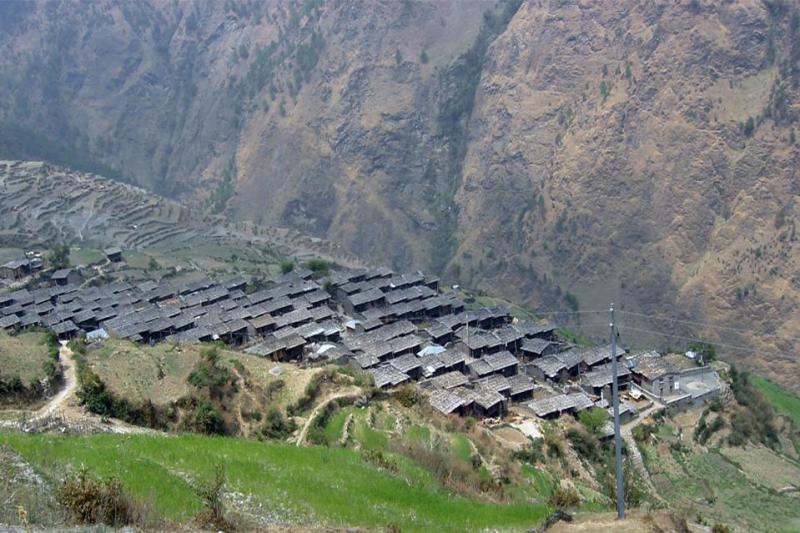
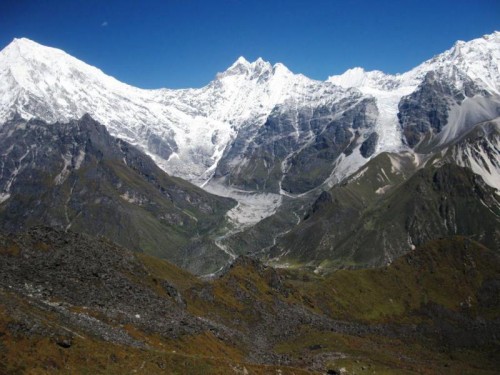

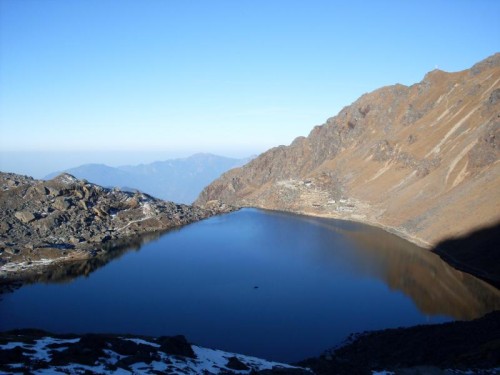

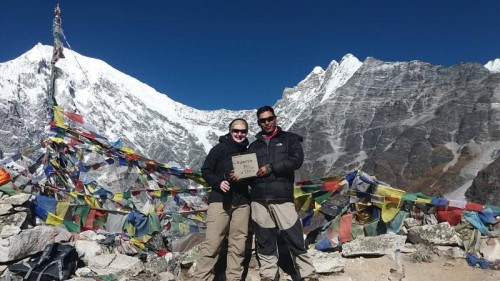

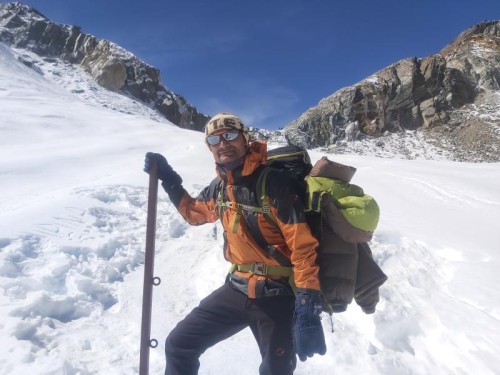
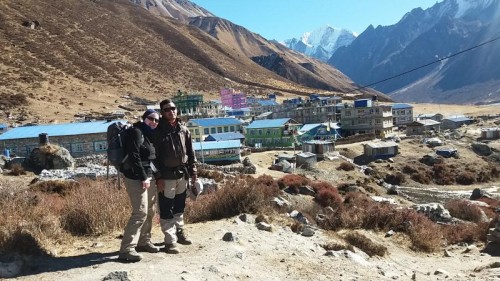
 USD 550
USD 550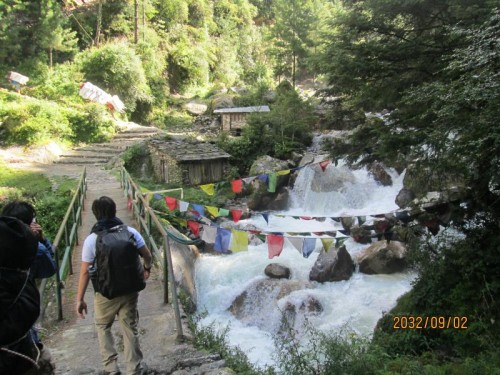

Sanyogita Kashyap
United States
Beautiful Trekking Trails to Tamang Heritage Site
18th June, 2023
I and my wife have completed the Tamang Heritage site one week trek and organized by High Pass Adventure. It's one of the most attractive trails I ever made. The trek was incredible, everything was brilliant, especially the old typical houses and home-stay, people and their life style and homemade local foods and doesn’t Miss Nagthali view point for the panoramic mountain. We have had a wonderful time with Purna, he prepared one of the best Dhal Bhat I ever had
USA